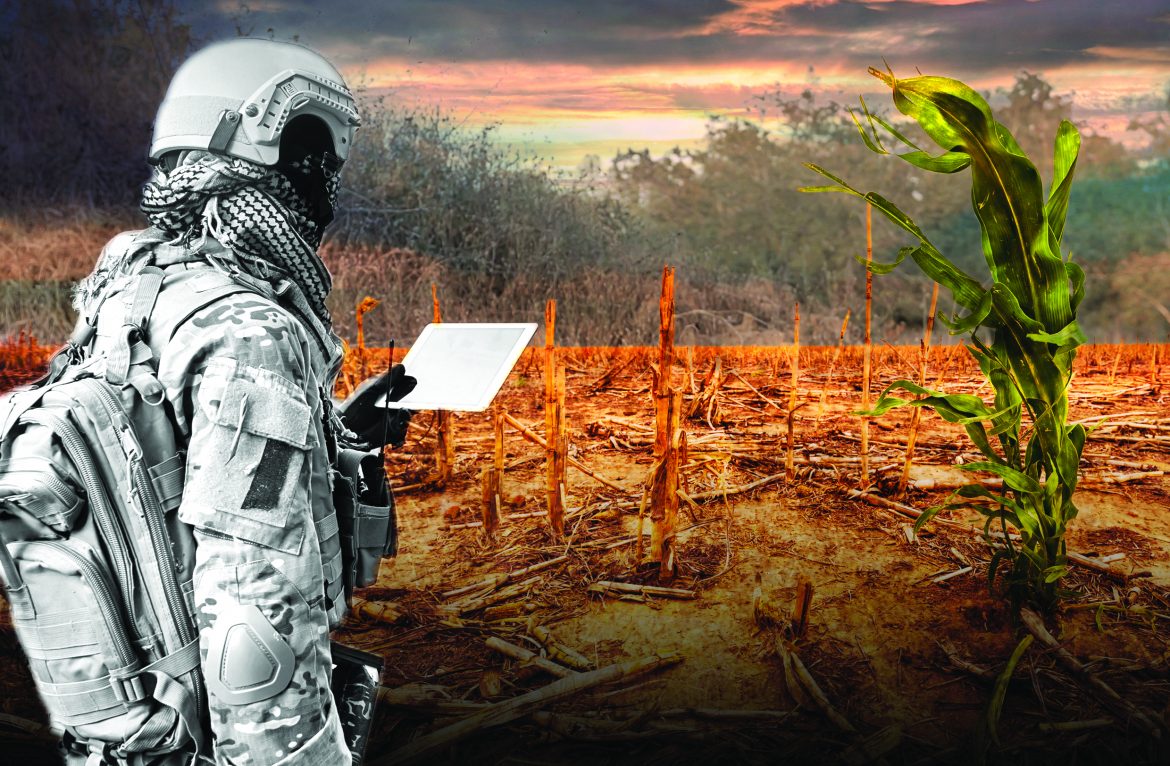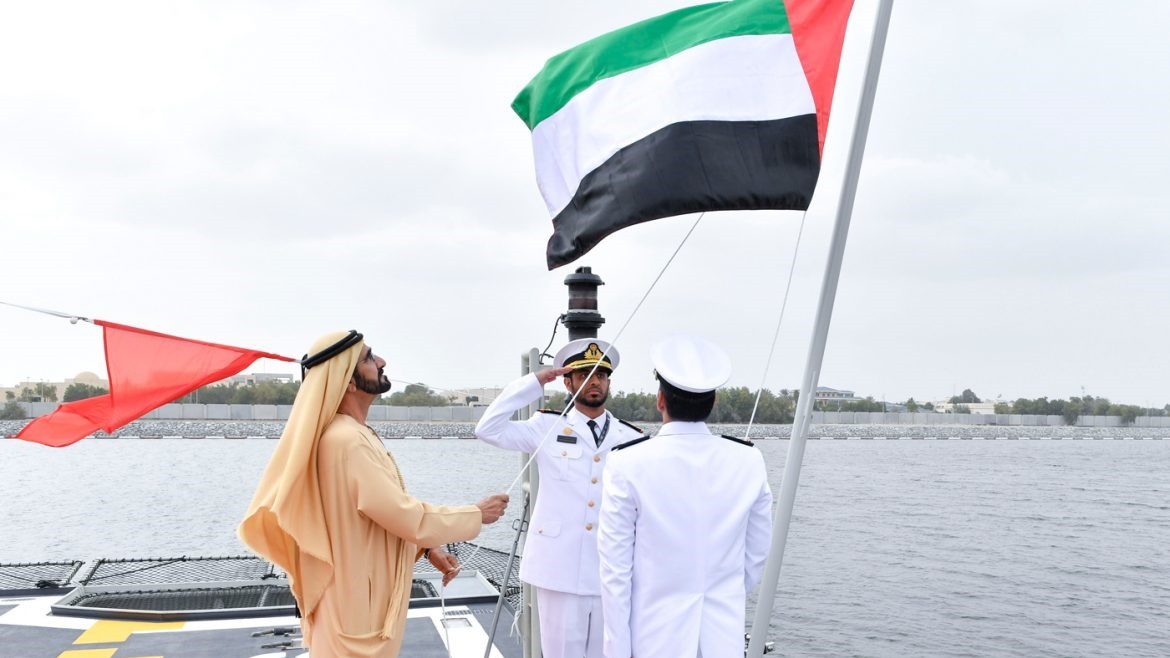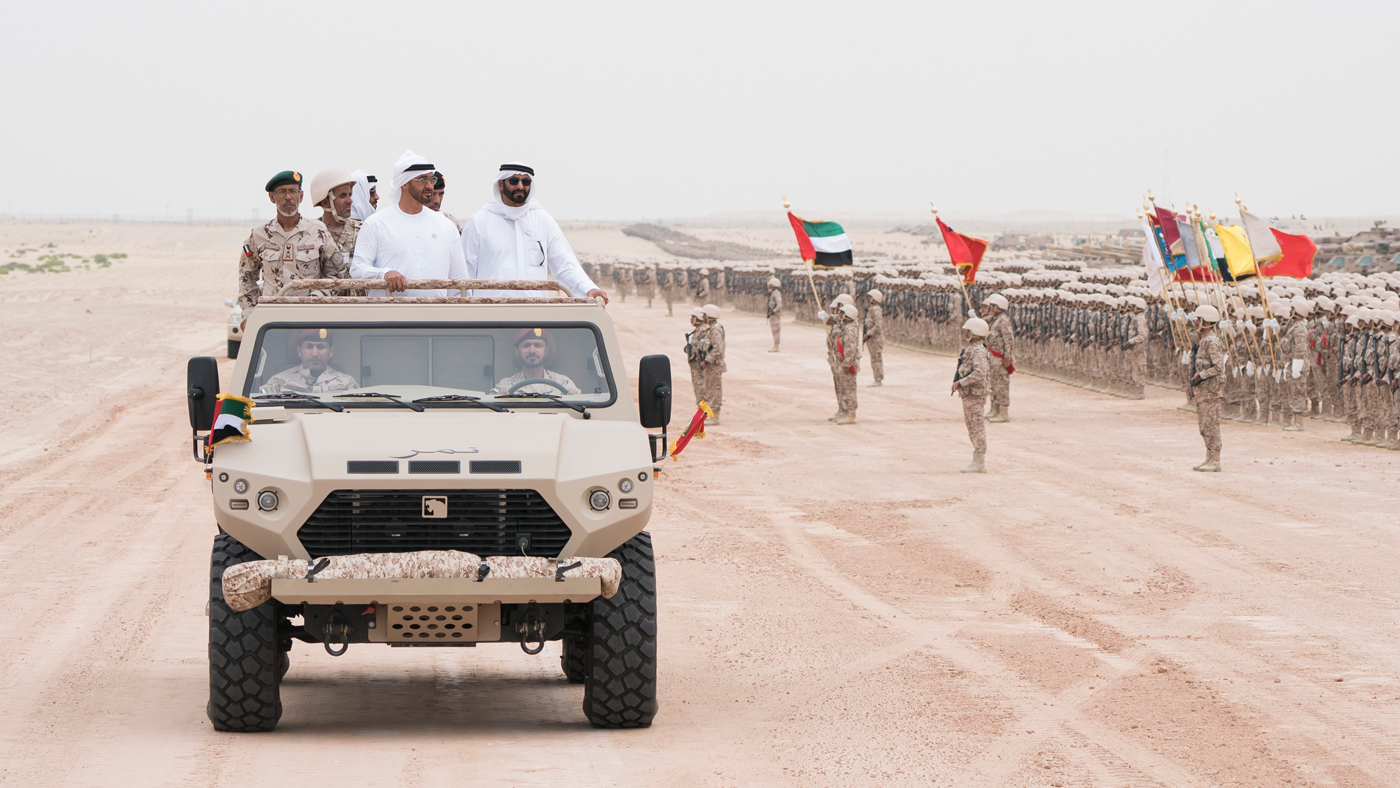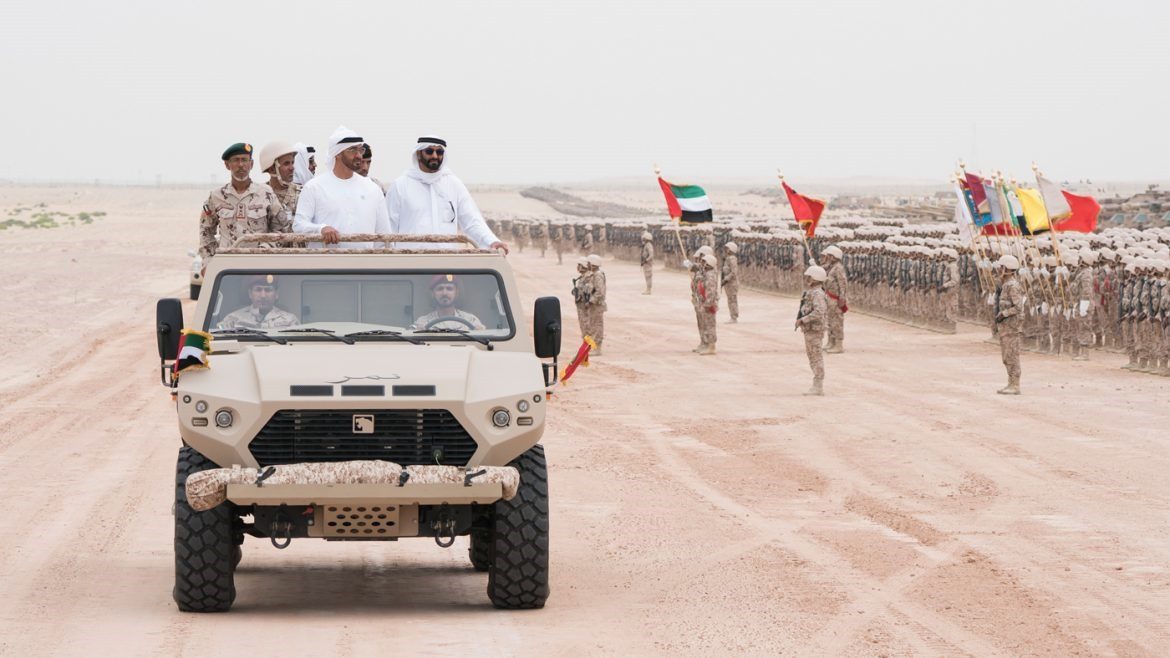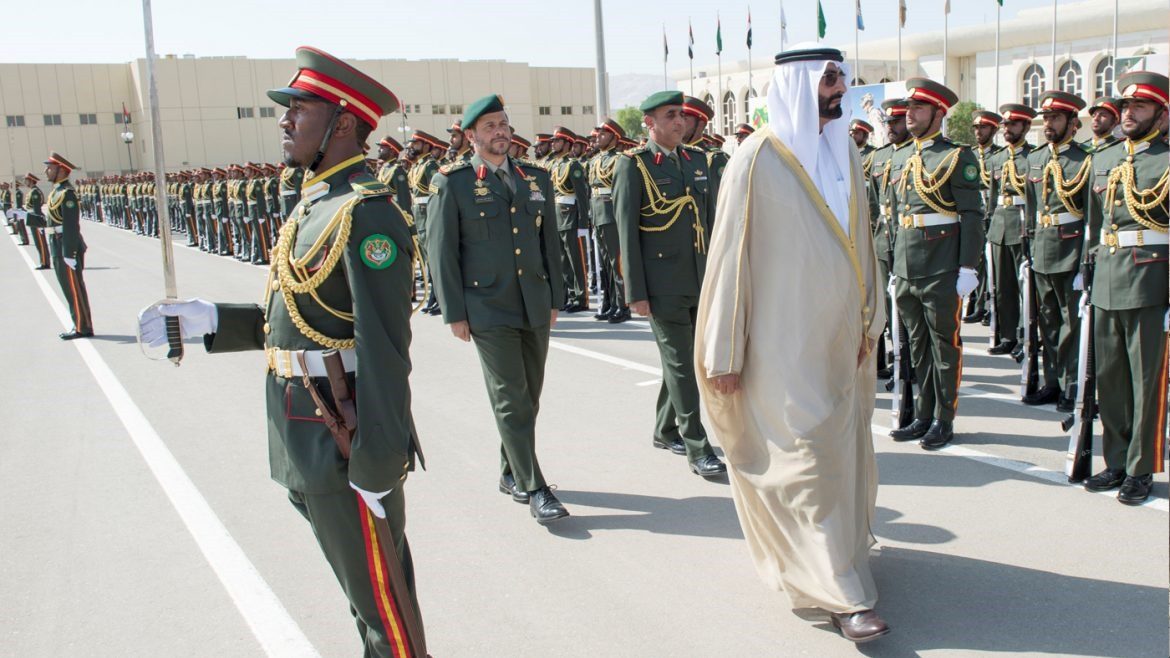While no conflict can be traced to climate change alone, it will undoubtedly exacerbate risks and threats soon, affecting international peace and security, especially in the Near and Middle East, South Asia, the Sahel and Sahara region, and the Arctic.
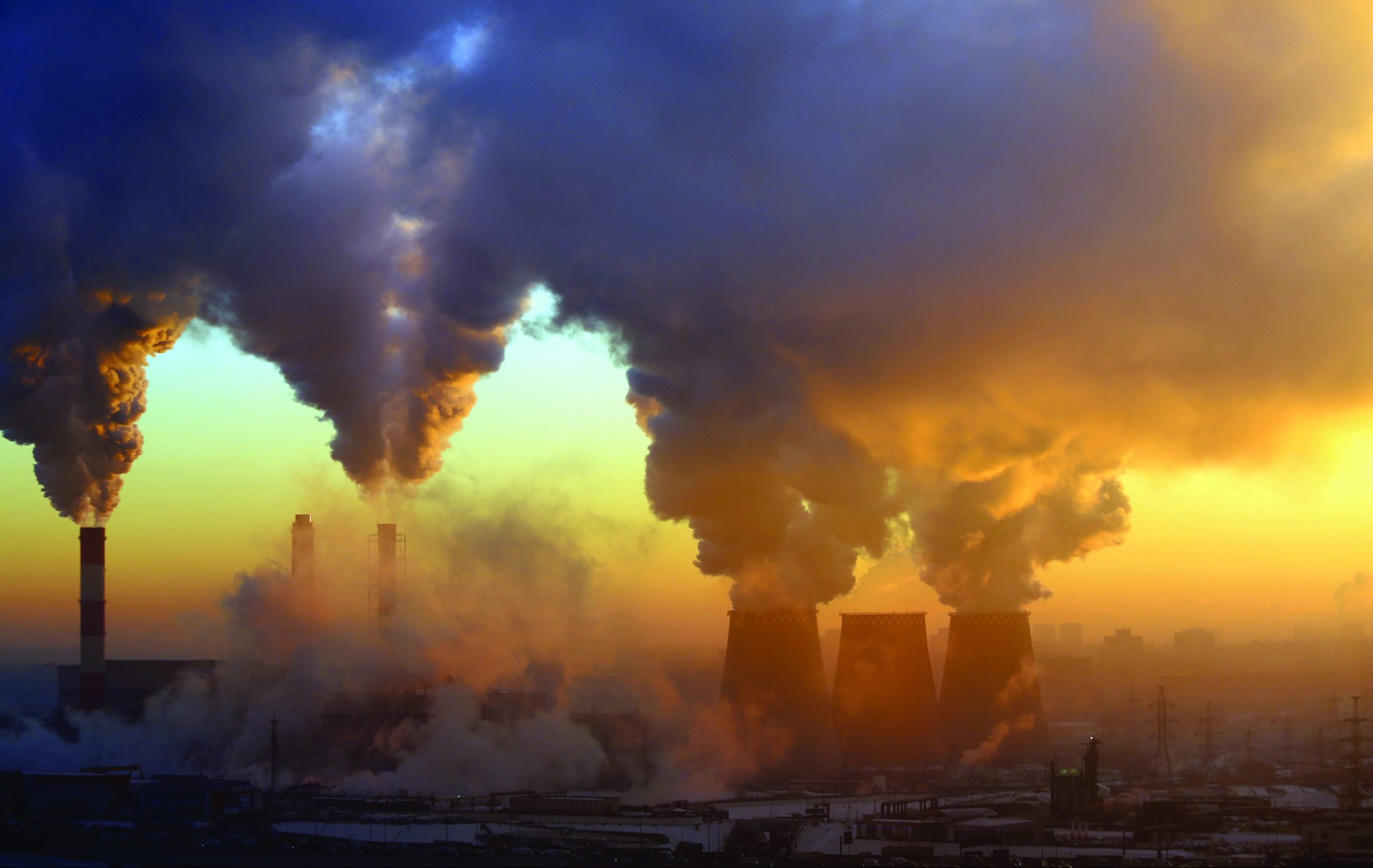
Many countries realize that climate change is gradually changing the international strategic context, which will affect the operations and capabilities of the armed forces.
Thus the term “climate security” emerged to include everything related to the impact of climate change on the strategic context, geopolitical balances, army operations and methods, and the anticipation and adaptation measures resulting from these changes.
Therefore, various militaries, including the French and Canadian armies, have taken an interest in climate change, its related issues and their impact on the armed forces and their future, and many countries support the UN Security Council’s bid to take over and deal with the issue.
Therefore, the adaptation of armies to climate change is a crucial matter and a huge and long-term project that undoubtedly affects the defence policy of countries and the future of their armies.
How do armies prepare for climate change and its effects?
The following analysis answers that question through the case of the French and Canadian armies, because of their beneficial experience, which can provide valuable lessons in this topic.
How does the French army prepare for climate change and its repercussions?
In line with the defence ministers’ joint statement on “Climate Change and the Armed Forces” adopted at the Paris Peace Forum in November 2021 with the support of 26 countries, the French General Staff presented the French Minister of the Armed Forces with a strategy for sustainably engaging the armed forces in adapting to climate change, which resulted in the following strategies:
- Commitment to the long-term “green defence” strategy
The French military committed to a green defence strategy to contribute to achieving the French government’s strategy to reduce greenhouse gas emissions, which are the main factor in global temperature rise and climate change so that it can be carbon neutral by 2050.
Given that the French army is participating in multiple operations in France and abroad, it can carry out operations that contribute to protecting the environment in those areas, such as participating in operations to combat illegal gold-mining activities, which destroy the forests of Guyana, which is a perfect example of the french army’s contribution to the protection of the environment and biodiversity.

- Implementation of a comprehensive climate security policy that can help in “winning the war before the war”
The French Ministry of the Armed Forces realizes that climate change will have repercussions at the strategic, operational and tactical levels, which the ministry must take into account in all its fields of work, whether in terms of operations, military or organizational doctrine, human resources, equipment, logistical support or logistical preparation.
Therefore, the ministry is planning to establish a comprehensive green system through which all relevant ministry institutions can contribute to a strategy that not only aims to adapt to climate changes, but also reduce those changes by promoting environmental and climate sustainability.
This strategy ultimately aims to enhance the ability of the armed forces to carry out their operations and maintain their intervention capabilities at any time, everywhere and under any circumstances to defend the French nation and its interests, ie, win the war before the war.
- Overcoming the challenges and repercussions of climate change on the French armed forces, through the following:
- Managing the repercussions of climate change on the missions and capabilities of the French armies.
- Fortifying infrastructures in France and abroad against these changes.
- Taking into account the privacy of the French Ministry of Armed Forces while it contributes to collective efforts, so that its efforts to reduce gas emissions and energy transitions, and the legal standards associated with it, do not affect its operational performance and superiority.
- Coordination with other ministries and international partners
Cooperation is key to the success of such efforts, especially, in the field of foresight, knowledge, adaptation and emissions reduction, which form an integral part of the EU and NATO’s larger climate strategy.
In this context, The French Ministry committed itself to the roadmap adopted by the European Union on “climate change and defence” in January 2021, as well as to the NATO action plan on climate change and security, which was adopted in June 2021, and aims to prepare armies to deal with climate changes on the defence and security levels.
To implement these strategies, the French Ministry of the Armed Forces seeks, through its climate and defence strategy – approved in 2022 and 2023 – to achieve the following goals:

- Developing knowledge and capabilities to anticipate and confront the strategic challenges of climate change
Climate research has been developing day by day, witnessing great progress recently, which requires that the ministry follows up on this development and apprise specialized army agencies and institutions so that they can better anticipate the multiple effects of climate change on the strategic context and the operations and capabilities of armies, which have become a necessary practice. The most important means of achieving this goal:
Climate risk mapping
Like every other army, the French military must always take meteorological and oceanographic factors into account when conducting its operations, and now it must take into account climate change and its consequences, which vary greatly according to regions and countries.
Therefore, the ministry aims to draw up a map of climate risks at the national and regional levels, which includes the areas in which the French army participated or is likely to participate in military operations.
Enhancing monitoring, research and foresight tools
This is achieved through the research and monitoring observatories that the ministry has established, such as:
- The Defence and Climate Observatory
Established in 2016, this forward-looking institution aims to provide the French Ministry of the Armed Forces with the strategic and geopolitical results of climate change, especially regarding its effects on defence institutions and the tasks and capabilities of the armed forces.
- The Energy and Material Flows Observatory
Established in 2019, this observatory provides the Ministry with the knowledge that maximizes its ability to anticipate energy developments and their geopolitical and strategic impacts, in addition to monitoring the energy strategies of the superpowers, energy transition policies and business patterns of companies in different regions of the world.
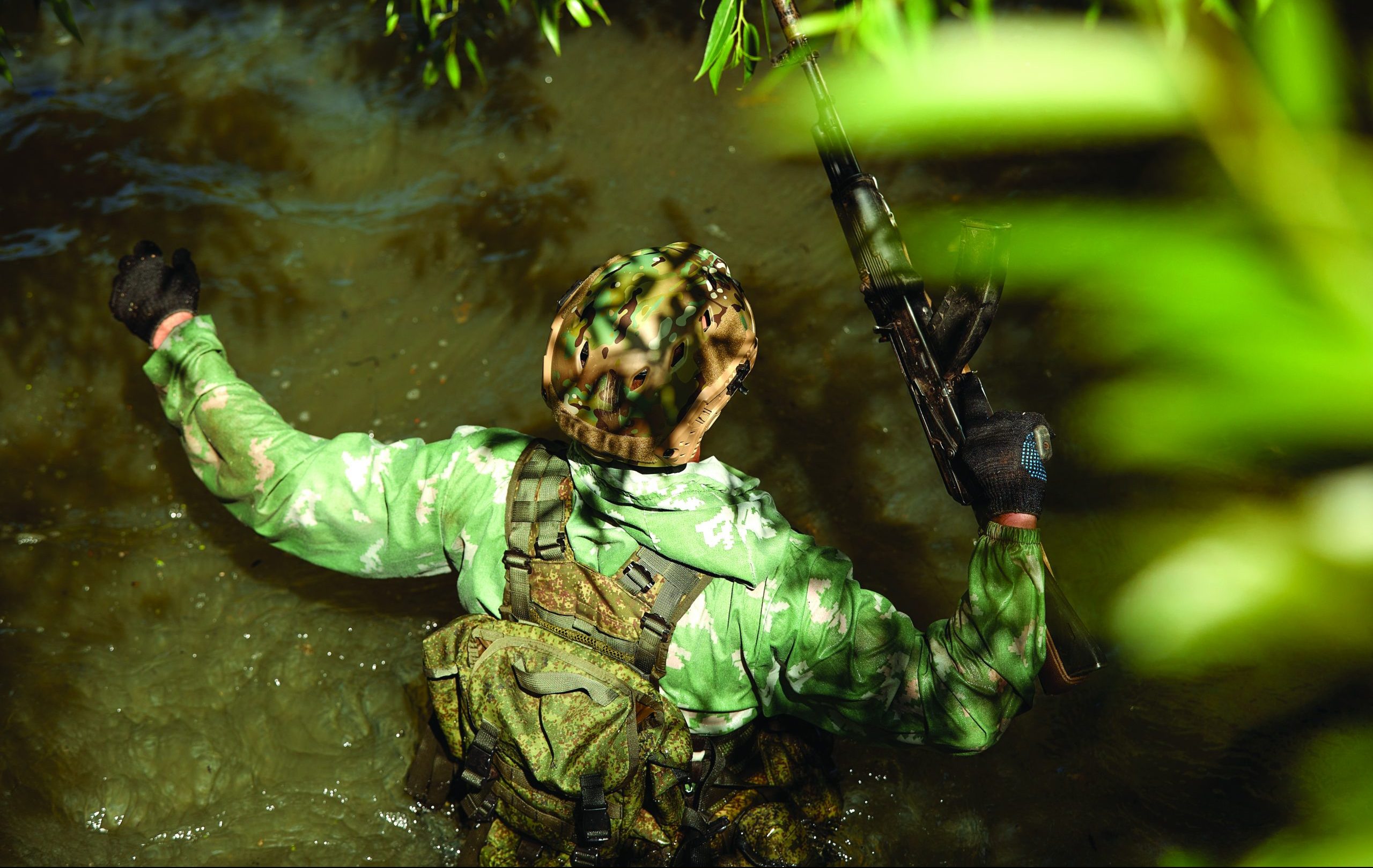
Strategic research support
The Ministry provides support for strategic research on anticipating and adapting to climate change, mainly through study contracts with research centres and public institutions or doctoral dissertation support.
Moreover, the Ministry is boosting its relationship with French social sciences research centres to analyze the social, economic, health and political effects of climate change in regions of the world of interest to France.
Supporting scientific projects important to the defence field
The Ministry plans to continue supporting scientific research programs to help anticipate the repercussions of climate change, which are likely to affect its operations.
This support is provided mainly through research programs such as the “Kivi Kuaka” program led by the National Museum of Natural History on how some species of birds which migrate across the Pacific Ocean can help provide early warning of floods, tsunamis and tropical storms.
Another example is the “MICROPAC” program that studies the migration of fish to the cooler waters of the eastern Pacific Ocean because of ocean warming and the rise of acidity levels as well as the repercussions of this migration on food and economic security of Pacific Island countries and the migration of illegal fishing activities.
Mobilizing all stakeholders to contribute to monitoring and anticipation efforts
The French Ministry of the Armed Forces seeks to integrate all institutions, actors and those interested in climate issues and their repercussions on armies such as defence missions abroad, as well as intelligence services, foreign missions and forces abroad to contribute to the work of strategic analysis and anticipation.
The comprehensive review of operational issues
The ministry initiated a preliminary review of the impact of climate change on operations and capabilities, in particular concerning:
- Taking climate change into account while considering international strategic context and crisis areas, where the French armies are involved or are likely to be involved, and its impact on current and future operations.
- The repercussions of the growing demand on military cooperation and assistance in managing crises caused by extreme weather events – humanitarian relief operations following natural disasters and search and rescue operations, both on national territory and abroad – or outbreaks of epidemics or assist the climate-displaced.
- Effects of climate change on operational capabilities.
- Managing health risks associated with climate change for military personnel, whether in training or in operations, which include extremely high temperatures, extreme cold, climate hazards, environmental pollution, infectious risks, etc.
Anticipating risks affecting defence infrastructures
Climate change is likely to affect the defence or dual-use infrastructures and the operations supported by them.
This results in several risks, including rising sea levels, increasing heat waves, droughts and fires, the loss of drinking or industrial water supplies, large-scale floods and landslides, storms and hurricanes.
Thus, the French strategy aims to form a long-term future vision to confront the weaknesses of the military infrastructure regarding climate change, in France and abroad, and identify how the current and future military training sites and battlefields will be affected by climate change.
- Commitment to an efficient dynamic of adaptation
This is achieved through the following strategies and approaches:
- Necessary adaptation to changing theatres of operations
This type of adaptation includes:
- adaptation to extreme cold (already underway operationally)
French Armed forces have already begun the process of adapting to extremely cold environments, evidenced by their increased activity in the Arctic region over the past decade, which was made easier by the accelerating melting of the ice which has lost 75% of its mass over the past 4 decades.
Furthermore, the latest report of the Intergovernmental Panel on Climate Change predicts the disappearance of summer sea ice by 2050.
This phenomenon has economic repercussions, as it allows for the economic exploitation of the region as well as the increase of its maritime transport activities, which will ultimately lead to the development of military activities of countries bordering the Arctic Ocean and those who have legitimate interests there, such as France.
Therefore, the Ministry seeks to develop a special knowledge of extremely cold environments and military cooperation procedures with most of the countries bordering the Arctic Ocean, to participate in multinational exercises, especially the joint Cold Response Exercise on cold environments and air training, in addition, it performs regular manoeuvers in that region.
– Continuing to adapt to hot battlefields
In hot regions, especially the Near and Middle East, Africa, the Caribbean, and the Indian and Pacific oceans, accounting for climate change is a necessity, as the increase in the number of extremely hot days affects the equipment’s performance and physical capabilities of deployed forces and imposes constraints on operational decision-making.
French armed forces have a strong presence on these battlefields, as they are involved in operations in the Sahel and the Middle East regions, which are very demanding in terms of climate.
– Preparing for operational engagement in extremely challenging environments
New arenas of international tension could emerge or intensify due to the consequences of climate change, as access to water, in particular, is a critical growth factor in many regions, particularly in the Near and Middle East, the Sahel and Sahara regions and South Asia.
Therefore, countries realize that the possibility of open conflicts is exacerbated by climate change and its repercussions, which will cause France and Europe to intervene to protect their interests, which in turn require their armed forces to adapt to those very difficult environments, which can be subject to severe social and economic pressures due to climate disturbances.
- Integrating climate change into the military capability approach
Climate change can affect the performance or lifespan of weapon systems. For instance, high temperatures in certain theatres of operations can damage engines or jam electronics, affect the carrying capacity and flight of aircraft, or pose risks to ammunition storage.
Moreover, the deployment of forces in polar regions can require the adaptation of some equipment, thus the French ministry seeks to identify climate risks and their effects on operational conditions to ensure the performance and reliability of equipment and technology programs as well as develop the ability of its troops to incorporate climate change into the capability approach for equipment and personnel.
- Innovative adaptation
This can be divided into the following 3 categories:
Air: higher temperatures amplify water evaporation, increasing the size and frequency of cloud covers, in addition, it increases the risk of freezing at high altitudes, which poses a flight safety issue.
Furthermore, current thermal or pneumatic ice protection systems cannot be installed on light aircraft such as drones and light helicopters, which limits their scope of use.
In addition, France’s Defence Innovation Agency (AID) supports research projects on other innovative technologies that are more economical in nature, which can be combined to improve their effectiveness.
Land: Use in hot areas increases stress on the equipment, which prompted the consideration of replacing auxiliary power units for ground-based devices and systems with lithium-ion batteries to deal with their premature wear in a very dusty environment such as the Sahel region.
Sea: the accumulation of microorganisms on the surface of vessels, which is exacerbated by climate change, slows down navigation due to the need to stop frequently at ports for cleaning.
This presents a technical challenge to develop high-performance paints that can reduce this phenomenon, while taking into account the need to reduce the impact on marine ecosystems, per European regulations for biocidal products.
- The sustainability of the ministry’s contribution to the collective efforts for energy transition and emissions reduction
The French Ministry of Armed Forces established a sustainable development policy about two decades ago, which resulted in strong environmental protection measures, with the adoption of the first Ministerial Strategy for Energy Performance in 2012.
In 2020, the ministry adopted a defensive energy strategy that respects environmental standards and contributes to general policies for sustainable development and energy transition, while ensuring that the armies’ intervention capabilities are not compromised at any time, anywhere and in any circumstances.
- Creating fruitful national and international cooperation dynamics
In the face of the global challenge of climate change, the response can only be collective, thus the ministry considers international cooperation a priority.
For this to work effectively, the ministry is developing a comprehensive approach for internal cooperation between its various institutions and external cooperation with other French ministries for integrated and sustainable coordination.
How is the Canadian military preparing for climate change and its repercussions?
The strategy of the Canadian Ministry of Defence for dealing with climate change and working on achieving sustainability on all fronts regarding the ministry is based on two axes:
- Coordinating efforts with allies
At the national level, Canada has already committed to taking climate change into account in its security and defence activities, as outlined in strategic documents such as the PSE Document, the Defence Energy and Environment Strategy (DEES) and the Canadian government’s Green Strategy for mitigating future climate change through action to urgently reduce greenhouse gas emissions, including those emitted by the defence sector.
Furthermore, Canada aims to contribute to finding a global solution by continuing to work with its partners to address climate and security challenges, especially NATO, which Canada is considered one of its main pillars.
In May 2022, NATO formally approved Canada’s official proposal to establish and host NATO’s Centre of Excellence in Climate Change and Security in the Canadian city of Montreal.
Canada believes that NATO – the world’s leading political and military alliance – can play a key role in addressing the security implications of climate change on the resilience of military installations and equipment, difficult or complex operating conditions, the changing nature of the strategic environments and the many other unique challenges that climate change could present, which affects the military and security agencies charged with maintaining international peace and security.
Moreover, Canada’s Ministry of Defence plans for the Center of Excellence to serve as a platform through which military and civilian actors can develop, improve and share knowledge about the security and military impacts of climate change.
- Commitment to the Federal sustainable development strategy (FSDA)
Under the Federal Sustainable Development Strategy (FSDA) aimed at providing transparent assessments of the commitments to sustainable development and legal accountability of government institutions, the Canadian Ministry of Defence submits a periodic report entitled “Defence Energy and Environment Strategy Results” to show progress in its implementation of the sustainable development strategy for energy and environment for defence.
The Canadian ministry aims to be environmentally sustainable, by better managing its energy consumption and reducing its environmental footprint through a wide range of activities, to achieve 4 main goals:
- Improving energy efficiency
- Incorporating climate change adaptation into the programs of the ministry
- Accessing all sustainable defence facilities
- Promoting green procurement of weapons and equipment, to reach carbon neutrality (zero net emissions), however, the Ministry recognizes that it remains difficult to find affordable and commercially available technological solutions to reduce greenhouse gas emissions from military facilities and equipment.
Furthermore, the ministry seeks to get rid of its environmentally polluting sites in accordance with the policies that give priority to the disposal of the most dangerous sites to the environment.
In addition, it aims to carefully manage the hazardous materials it acquires through its work throughout its life cycle, while reducing the use of these materials wherever possible and exploring less dangerous alternatives that meet defence needs.
The current Canadian defence doctrine dictates that fulfilling the defence mission depends on the wise management of energy, the resilience of key infrastructure in the face of climate change, compliance with environmental regulatory requirements, and the sustainable management of land and resources to maintain safe and healthy communities.
This is done by accounting for energy and environmental considerations in the work of the ministry and the military, in addition to ensuring that the decision-making processes will continue to take into account sustainability and energy efficiency.
The Ministry’s Defence Energy and Environment Strategy (DEES) aims to achieve the following strategic objectives:
- Less wasted and cleaner energy
Defence capabilities including fleets and equipment are all powered by energy, which is also essential for soldiers and military camps, some of which are located in environments with difficult or extreme conditions that require very large energy resources.
Furthermore, the ministry operates and maintains a diverse infrastructure across the country, as far north as the High Arctic region, thus providing access to adequate, reliable and affordable energy whenever and wherever needed is essential for ensuring the ability, operational readiness, sustainability and responsiveness of the defence team to deliver on its mandate.
The ministry aims to reduce defence energy demand by ensuring that performance measurement systems and processes are in place and energy-saving measures are improving energy efficiency in all aspects of defence activities, and aiding the shift to low-carbon and more sustainable energy sources, such as hydropower, wind and solar power.
- Reducing the risks of climate change
Evaluating climate change risks to defence programs, critical infrastructure, operational and non-operational activities, and training to ensure readiness to adapt to a changing climate.
- Reducing the defensive environmental footprint
Reducing greenhouse gas emissions and other environmental impacts from the combination of commercial and operational vehicle infrastructure, fleets and equipment.
As the federal government’s largest energy consumer and largest producer of greenhouse gases, the defence sector plays a crucial role in helping the Canadian government achieve its climate and sustainability goals by reducing greenhouse gas emissions from its infrastructure and vehicle fleets, wherever possible, and achieving net zero emissions by 2050.
Therefore, the ministry aims to use clean electricity by 100% by 2025 at the latest by generating or purchasing renewable electricity and achieving net zero emissions by 2050 at the latest.
- Adapting to climate change
Climate change affects the frequency, duration, and number of climate-related hazards and disasters in Canada and around the world, such as floods, wildfires, droughts, and extreme weather events that threaten the safety of Canadians and infrastructure.
The ministry of defence must maintain the ability to respond to a range of contingencies, including participating in rapid response to disasters and contributing to search and rescue operations as needed, which could create complications in the global security environment.
The Arctic region also represents an important international crossroads where issues related to climate change, international trade and global security intersect, as climate change is causing sea ice to melt in the Arctic and the Atlantic Ocean, which will lead to increased activity in the Arctic, increasing the demand for security and protection in it.
Given the impacts that climate change may have on military infrastructure, operations, and the safety of Canadian military personnel, the department of defence will take steps to mitigate these risks, including the proper management and maintenance of infrastructure, whether on the bases and facilities, where the military trains and carries out its mission, or the extensive support network required to maintain and operate equipment and military housing, and the sustainability of flexibility in adapting to climate changes.
- Incorporating sustainability into the decision-making process
This is critical to increasing operational readiness and defence resilience, given that energy and the environment are strategic resources that when managed effectively, can enable the Canadian ministry of defence to carry out its duty and strategies in the future.
Conclusion
Both the French and Canadian militaries have ambitious plans and strategies to transition to green militaries over the next few years, but one of the biggest challenges for this goal is the unavailability of reliable, low- or zero-carbon renewable fuels on a large scale to operate all the basic military equipment and installations needed by both armies.
In addition, the global economic and security crises in today’s world represent another obstacle to those plans and strategies, as the green transformation of armies is extremely costly in the short term and the security shifts affecting the balance of power are multiplying and deepening, and in the face of urgent economic or security needs, the green approach of the armies may be discouraged.
By: Dr Wael Saleh, PhD (Expert at Trends Research & Advisory)


